Day 8
We would end our tour in Hiroshima (広島) and return to Tokyo (東京) via a 2-leg Shinkansen ride, transiting at Shin-Osaka Station (新大阪駅). We checked out from our Airbnb early in the morning and made our way to the Honkawa-cho Hiroden Station (本川町), and from there taking the tram ride to Hiroshima Hiroden Station (広島駅). We had a quick breakfast at Hiroshima Station (広島駅), before we boarded the Shinkansen Sakura. The overall journey to Tokyo would take more than 4.5 hours, which we had ample of time to catch some sleep along the way.
 |
| Our 2-leg Shinkansen tickets from Hiroshima to Tokyo |
Hotel Sardonyx UenoAfter we arrived at Tokyo Station (東京駅), we took the JR Yamanote line and alighted at Okachimachi JR Station (御徒町駅). From there, it was a short walk to our final accommodation of the Japan tour,
Hotel Sardonyx Ueno.

We had chosen this hotel due to its affordability, excellent location within walking distance to Okachimachi JR Station (御徒町駅), Naka-Okachimachi Metro Station (仲御徒町駅) and Keisei Ueno Station (京成上野駅), and good online reviews from
Trip.com. The superior double rooms we booked were well equipped, but the room is small especially the double bed (but we understand this is typical in the city centre of Tokyo).
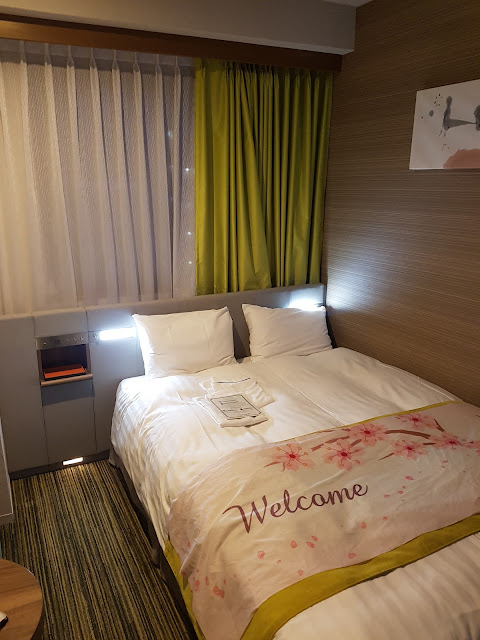 |
Superior Double Room
|
 |
| Bathroom |
We did not spend too much time in the room after check-in, as it was already well passed the lunch time and we were famished. We dropped our luggage and left the hotel in search of our lunch.
Yakiniku Taishou Ueno (焼肉大将 上野本店)
We walked around our hotel area and eventually settled down at Yakiniku Taishou Ueno (焼肉大将 上野本店) located at Okachimachi Station Road for a BBQ buffet. The lunch buffet offers free flow of marinated meat (such as beef, pork, and chicken), mushroom, soup, noodles and rice. They have English menu, so it wasn't difficult to order our food. There wasn't many customer at that time, so the food were served quickly and we started grilling the meat, which was tender and delicious. Overall, the food was good and the price was cheap too for a free flow BBQ buffet.
 |
| Yakiniku lunch buffet |
Meji Jingu (明治神宮)
After the lunch, we headed to the nearby Okachimachi JR Station (御徒町駅) and took the JR Yamanote line to Harajuku Station (原宿駅) to visit the first attraction of the day, Meiji Jingu (明治神宮). Meiji Jingu is a Shinto shrine dedicated to Emperor Meiji and Empress Shoken, who ruled during the period which led to the modernization of Japan. The main building is located in a big, forested park, which is around 10 minute's walk away from the South entrance located just outside the Harajuku Station (原宿駅). As it was a weekend, there were a lot of visitors when we arrived at the South entrance. We walked through the Giant Torii and headed into the park.
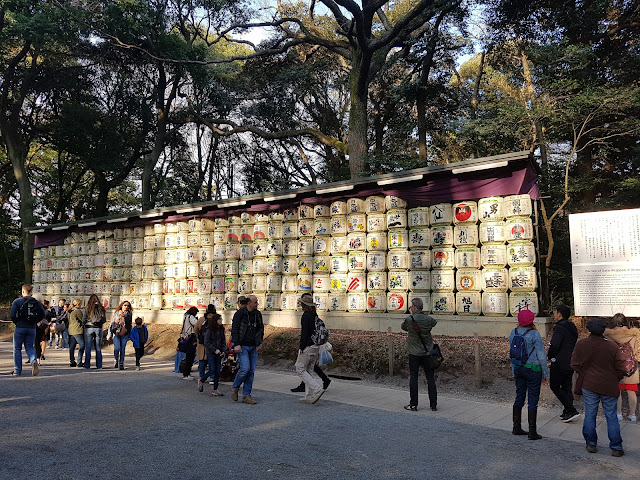 |
| Rows of Sake barrels |
 |
| Information about the Sake barrels |
 |
| Rows of French wine barrels |
Before we enter the main compound, there is small pavilion (Chozuya) for the visitors to perform the water ritual (or act of purification), which is typical for temples and shrines in Japan.
 |
| Giant Torii |
 |
| Entrance to the main shrine compound |
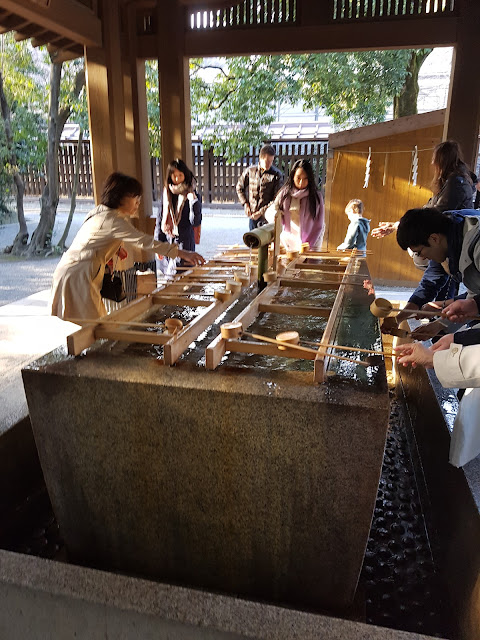 |
| Chozuya |
The accessible area for visitors is not very big, furthermore the main shrine hall was under restoration work during our visit. Notable features in the compound are the Couple Camphor Trees (夫婦楠) (2 trees connected with a rope, that symbolize the marriage between the Emperor and Empress) and an area for making wishes on a Japanese ema (wooden plague).
 |
| Couple Camphor Trees on the right side |
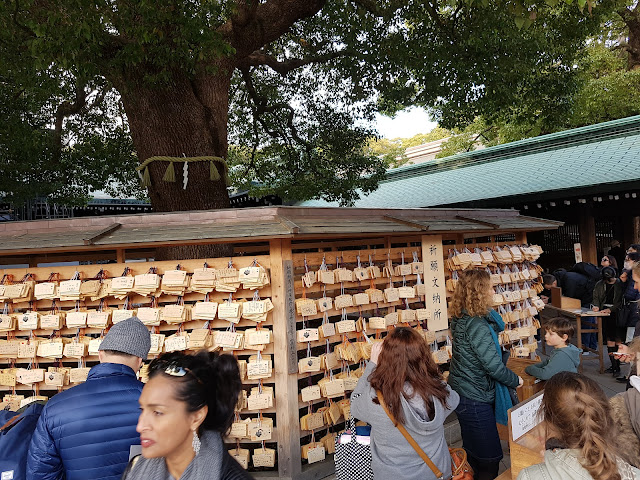 |
| Japanese Ema |
We crossed over to the eastern compound, where there are shops selling offerings, charms, and amulets. We were lucky to come across a couple in traditional Japanese wedding costumes with their family and friends. I had learnt that the shrine is also a popular place to hold traditional Shinto weddings.
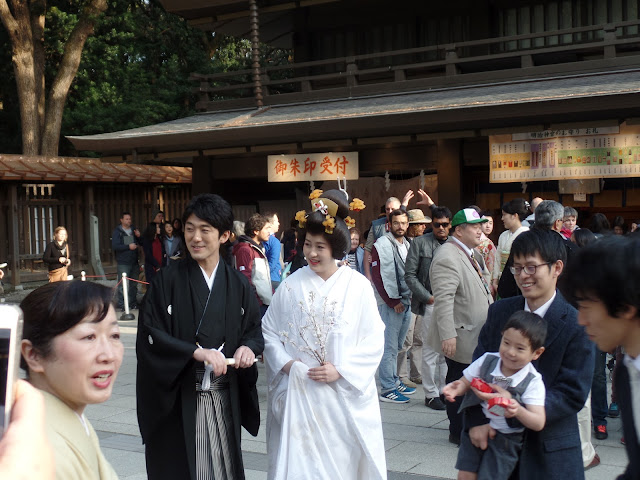 |
| Married couple |
After the main shrine compound, we did not further explore the large park. We made our way back to the Harajuku Station (原宿駅) and took a short train ride on the JR Yamanote line to Shibuya JR Station (渋谷駅).
Shibuya (渋谷)
Shibuya (渋谷) is a very popular shopping, entertainment, and dining district, especially with the youngsters. Other than that, there are 2 landmarks that are considered as must see for first time visitor.
The first one is the Hachiko dog statue. It is not difficult to find, as the train station exit to the statue is literally named after it (Hachiko Exit). The famous story behind this loyal dog (Hachiko) is that it waited for his master in front of the Shibuya train station every day, and even continued to do so for more than 9 years after his master passed away. The American film in 2009 "Hachi: A Dog's Tale" is based on this true story of Hachiko. Images of the Hachiko dog can also be seen on the walls outside the train station and the local community mini bus, which makes it an icon of the district.
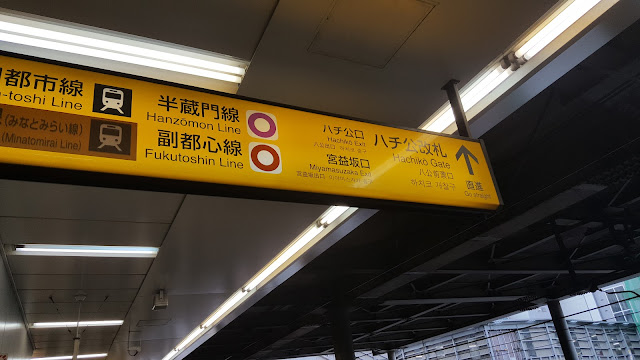 |
| Direction to Hachiko Exit at Shibuya JR Station |
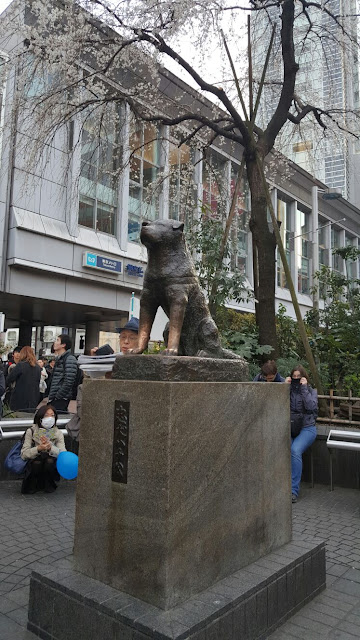 |
| Hachiko Dog Statue |
 |
| Images of the Hachiko Dog on the wall outside Shibuya JR Station |
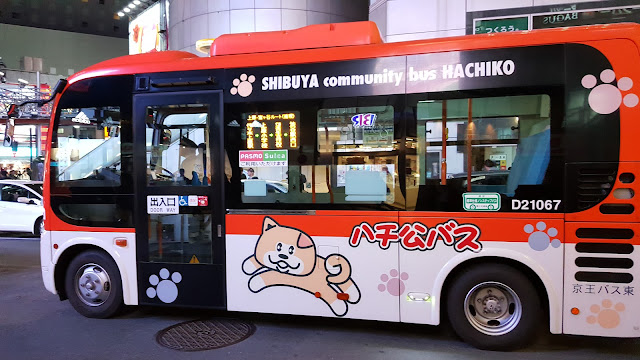 |
| Hachiko Dog Themed Community Bus |
The second one is located just beside the Hachiko dog statue, the Shibuya Crossing, which is described as the world's busiest pedestrian crossing. The view of the crossing is simply spectacular. The traffic lights will stop all vehicles at the junction and allow pedestrians (up to 3000 per green light) to cross the intersection at all directions! Every time the traffic light turned green, we could see some people rushing into crossing to take selfies against the amazing human crowd.
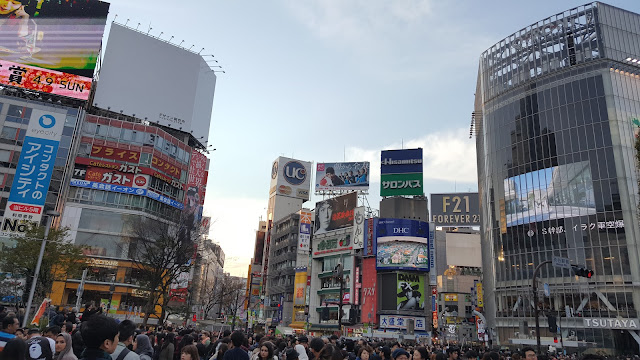 |
| Shibuya Crossing |
We made our way through the crossing too, towards the Center Gai, which is a pedestrian only street. From here, large shopping malls, fashion boutiques and restaurants lined both sides of the street. After the long shopping event, we were tired and famished. We decided to patronize Keika Ramen Shibuya Center-Gai for their ramen.


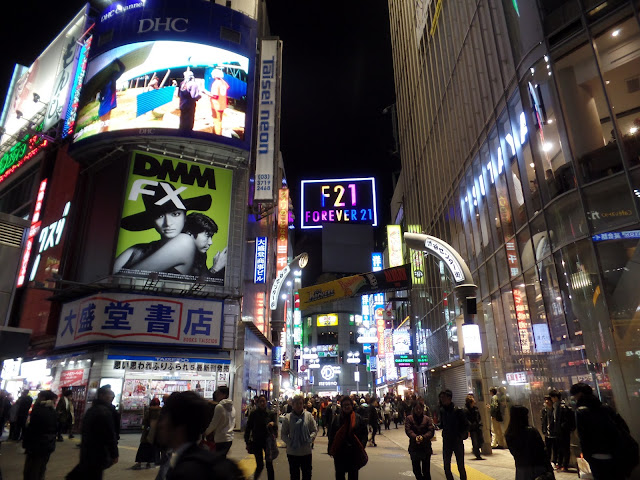
Keika Ramen Shibuya Center-Gai (桂花ラーメン 渋谷センター街店)
The restaurant sells various type of ramen, but I had ordered their signature Taro ramen. I would say it was unique and my first time having this kind of ramen, which comes with the braised pork belly, seasoned egg, cabbage, and bamboo shoots. It was delicious and the pork bone soup very flavorful.
 |
| Taro Ramen from Keika Ramen |
After our dinner, it was time to call a day. Just at the Shibuya Crossing before we headed to Shibuya JR Station (渋谷駅) to take the train back to our hotel, we were delighted to see a group of
Street Go-Karts (with drivers in cartoon costumes) driving past the intersection. What an amazing sight to end the day in Tokyo!
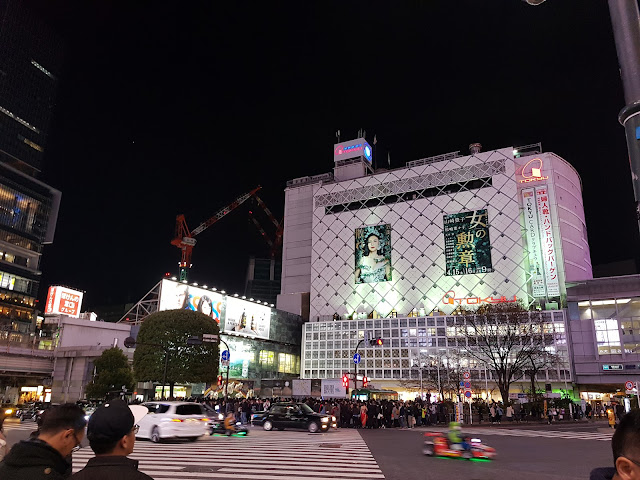 |
| Street Go-Karting at Shibuya Crossing |
Follow the links below to the other days of my Japan tour:
Day 1: Ueno, JR Pass, PASMO, Nakamise-Dori Shopping Street, Senso-ji Temple, Tokyo One Piece Tower
Day 2: Shinkansen, Odawara, Hakone Free Pass, hakone Venetian Glass Museum, Togendai, Owakudani, Lake Ashi Sightseeing Cruise, Hakone Yuryo, Onsen
Day 3: Kyoto, Fushimi Inari Shrine, Kiyomizu-dera Temple, Gion, Pontocho
Day 4: Kyoto Imperial Palace, Kinkaku-ji Temple, Arashiyama, Togetsukyo Bridge, Arashiyama Bamboo Grove, Kyoto Nishiki Warai
Day 5: Osaka, New Osaka Hotel Shinsaibashi, Osaka Aquarium Kaiyukan, Osaka Castle, Shinsaibashi Shopping Street, Dotonburi, Ichiran Ramen
Day 6: Momofuku Ando Instant Ramen Museum, Tenjinbashi-suiji Shopping Street, Osaka Museum of Housing and Living
Day 7: Hiroshima, Tram, Miyajima, Giant Torii Gate, Sika Deer, Itsukushima Shrine, Atomic Bomb Dome, Hiroshima Peace Memorial Park, Hiroshima Peace Memorial Museum, Hondori Street, Okonomiyaki
Day 8: Hotel Sardonyx Ueno, Meiji Jingu, Shibuya Crossing, Hachiko Dog Statue




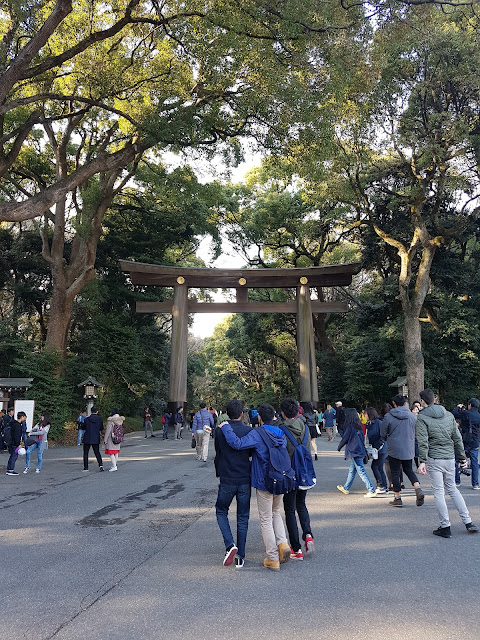
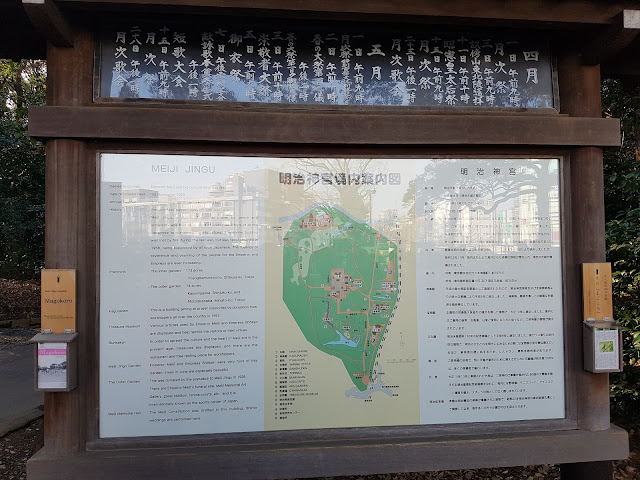






















No comments:
Post a Comment